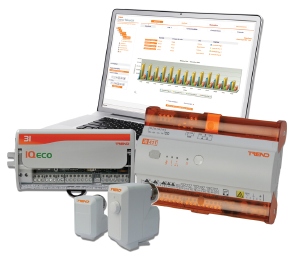Single-track mind

Integrating third-party equipment and plant into a building energy management system (BEMS) might, in theory, seem straightforward enough. However, as Andrew Skelcey of Trend Control Systems explains, if the process is not carried out correctly it could well end up costing much more than it should in terms of time, energy and money.
The complexity of modern buildings and the diverse ways they are configured often means that disparate elements of a building services infrastructure are integrated into one holistic, open-protocol BEMS. However, with some manufacturers of equipment such as pumps, heating and ventilation (H&V), and renewable-energy technologies offering their own unique controls systems — with the promise that they will fully integrate with everything else — the process is usually far from straightforward.
The creation of ‘hybrid’ controls systems is fraught with potential pitfalls and a great cause for concern for those specifying, configuring and installing BEMS. Put simply, control systems that are autonomous, conflict and do not interconnect will certainly have a negative impact on occupancy comfort, energy use and equipment lifespan.
Claims from BEMS manufacturers about the problems associated with integrating different controls systems are sometimes met with scepticism and a sense of ‘they would say that, wouldn’t they?’ However, these concerns are based on what’s happening in the field and they are not unique to any particular BEMS manufacturer.
Although there is plenty of evidence to suggest that interfacing control systems is possible through careful integration, to do so successfully requires co-operation between all the building services equipment manufacturers and the BEMS integrator. It also needs specific, clear objectives from the end user concerning timescales, expertise and project management expectations — not to mention the ability of the main contractor to look beyond initial price in favour of total cost of ownership (TCO). Unfortunately, particularly when it comes to the new-build sector, these factors can be in short supply.
The contractual chain sometimes fails to see beyond the initial price, and while saving money by using low-cost hardware is great in the short-term, it will probably cost much more in the long term.
To illustrate this point, I was recently involved with a significant PFI project. Determined to save money and increase margin, the main contractor decided to use a number of disparate controls systems with a view to integrating them at a later date. This saved just £1000 on the initial purchase price; before the project was even completed almost 10 times that amount had been spent trying to get the various systems to interface correctly.
This failure to look at the bigger picture can actually result in additional maintenance and repair costs, and drastically compromise the longevity of the BEMS.

Instead of taking a ‘top down’ approach and consulting with a BEMS manufacturer at the initial stages of a project, all too often the building-services infrastructure is installed and the systems integrator arrives on-site and is asked to make it all work seamlessly. To make matters worse, the various systems are usually not commissioned and, as the BEMS integrator does not have access to information or products from all the manufacturers involved, this can prove an impossible task.
The only way to address the problem is to get the experts from each individual manufacturer back on-site to work with the BEMS integrator and devise a solution — something that is often easier said that done and can prove costly.
Even if a solution is possible, it often means using alternative devices to get them to interface — something that is highly problematic in itself. This is because a BEMS manufacturer’s products are usually designed to work with a certain protocol — be that the manufacturer’s own communications protocol or, indeed, an open system offering such as BACnet. It therefore makes sense to work with products that have been designed and built to operate in perfect harmony around a specific protocol.
Also, interoperability should be considered. For example, those who purchased a Trend IQ controller 20 years ago and now wish to extend their system can buy the very latest IQ controller — and it will communicate seamlessly with earlier products. This means that the BEMS can be easily upgraded and expanded.
Many of the issues outlined above stem from ignorance, unrealistic expectations and a determination on the part of some main contractors and end users to overcomplicate a BEMS. My advice is to keep it simple and avoid integration purely for integration’s sake.
A single-source BEMS will work better on a day-to-day basis and can be cost effectively supported throughout its entire lifecycle. Maintenance, repair, expansion and optimisation of the system will be far easier, quicker and cheaper, and ongoing compatibility and support will be viable. Perhaps most importantly, you won’t be ripping it all out and starting again in a couple of years’ time!








